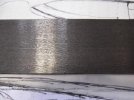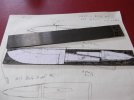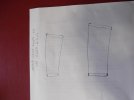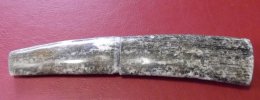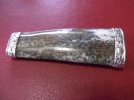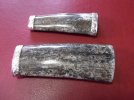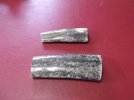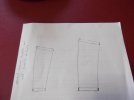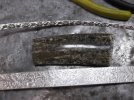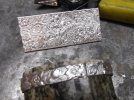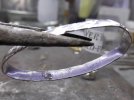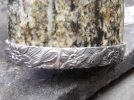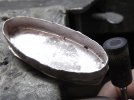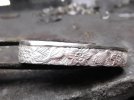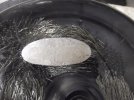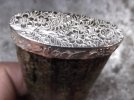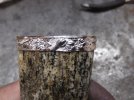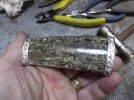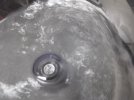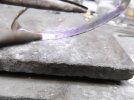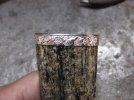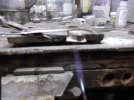Stacy E. Apelt - Bladesmith
ilmarinen - MODERATOR
Moderator
Knifemaker / Craftsman / Service Provider
- Joined
- Aug 20, 2004
- Messages
- 38,244
I am putting up a tutorial on making a knife from a special piece of handle material. It isn't uploading right, so I may have to put it up in pieces. Bear with me and keep watching this thread as it develops.
Sometimes a piece of handle material comes along and just yells "Make a Knife out of Me!". You have to respect that kind of moxie.
I regularly design a knife starting with the handle. I thought some of you folks would like to see the process. I started this project after coming back from Ashokan last week. I have had this fantastic piece of fossil walrus for a while, and decided to get going with it. I decided to make a dress sgian dubh and a belt knife that isn't quite a dirk, but would be a good companion for the sock knife. I added sterling silver bolsters and butt caps with an engraved floral pattern. They only project a tad above the ivory,....just enough to give a secure grip. Obviously, there can be almost no trimming or shaping done to this fossil material...so I designed the knife around the handle.
I'll post photos as I go as well as some from similar projects. The blank posts are for future photos and tutorials on making the caps.
OK, enough for now. Here are some photos of the plans being drawn and the patterns glued up.
For some reason the photos loaded in reverse order.
Sometimes a piece of handle material comes along and just yells "Make a Knife out of Me!". You have to respect that kind of moxie.
I regularly design a knife starting with the handle. I thought some of you folks would like to see the process. I started this project after coming back from Ashokan last week. I have had this fantastic piece of fossil walrus for a while, and decided to get going with it. I decided to make a dress sgian dubh and a belt knife that isn't quite a dirk, but would be a good companion for the sock knife. I added sterling silver bolsters and butt caps with an engraved floral pattern. They only project a tad above the ivory,....just enough to give a secure grip. Obviously, there can be almost no trimming or shaping done to this fossil material...so I designed the knife around the handle.
I'll post photos as I go as well as some from similar projects. The blank posts are for future photos and tutorials on making the caps.
OK, enough for now. Here are some photos of the plans being drawn and the patterns glued up.
For some reason the photos loaded in reverse order.
Attachments
Last edited:

